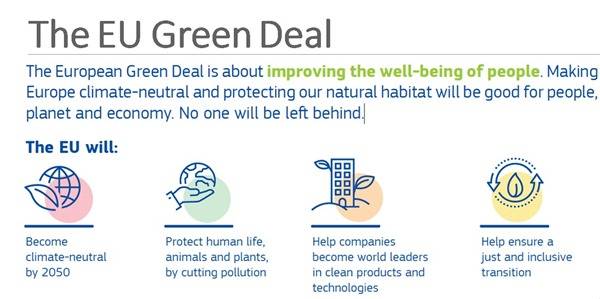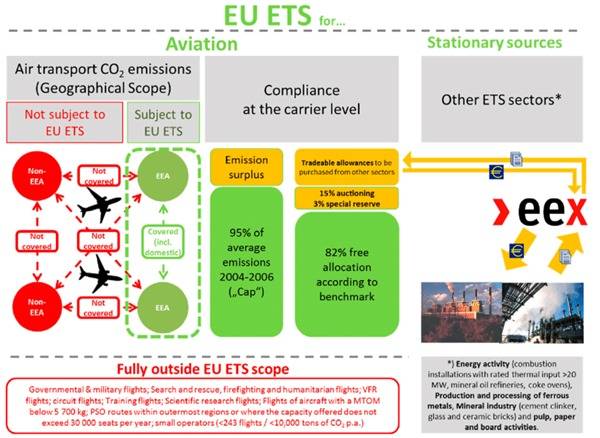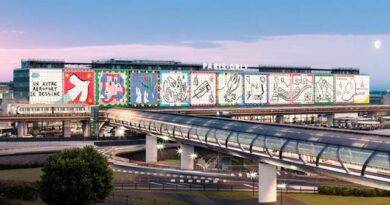The Green Deal’s Takeoff: How it’s Reshaping the Aviation Industry for a Sustainable Future
The European Union’s Green Deal, a landmark initiative aiming for climate neutrality by 2050, has significant implications for the aviation industry. Traditional aviation practices contribute heavily to greenhouse gas emissions, and the Green Deal presents a major challenge, but also an opportunity for transformation. Let’s delve deeper into how this ambitious plan is taking flight.

Sustainable Aviation Fuels (SAF): Powering a Cleaner Future
A cornerstone of the Green Deal is the mandated use of Sustainable Aviation Fuels (SAF). Unlike conventional jet fuel derived from fossil fuels, SAFs are created from renewable sources like biomass or captured carbon dioxide. These alternative fuels dramatically reduce lifecycle greenhouse gas emissions compared to traditional jet fuel, making them a critical component of the aviation industry’s greening efforts.
The Green Deal establishes a rising minimum threshold for SAF use, starting at 2% of fuel supplied at EU airports in 2025 and reaching a substantial 70% by 2050. This significant increase incentivizes investment in SAF production and infrastructure, paving the way for a more sustainable aviation future.
The EU Emissions Trading Scheme Gets Sharper
Another key tool in the Green Deal’s arsenal is the revamped EU Emissions Trading Scheme (EU ETS). This scheme assigns airlines tradable permits, allowing them to emit a specific amount of CO2. Previously, airlines received a portion of these permits for free. The Green Deal phases out these free allowances, forcing airlines to purchase more permits for their emissions on the open market.
This economic pressure creates a strong incentive for airlines to invest in cleaner technologies and operations. By making it more expensive to pollute, the EU ETS pushes airlines to embrace greener practices, accelerating the transition towards a more sustainable aviation industry.

Innovation Soars: New Technologies Take Flight
The Green Deal isn’t solely focused on tweaking existing technologies. It actively promotes innovation to revolutionize the aviation sector. Significant funding is being directed towards research and development of new aircraft designs, including electric and hydrogen-powered planes. Additionally, advancements in air traffic management systems are being explored, with the aim of optimizing flight paths. And reducing overall fuel consumption.
These cutting-edge technologies hold immense potential to further reduce emissions in the coming decades. By fostering innovation, the Green Deal is laying the groundwork for a future where air travel can be both efficient and environmentally conscious.
Challenges and Opportunities: A Collaborative Path Forward
The transition to a climate-neutral aviation industry is a complex and ambitious undertaking. Challenges exist, such as ensuring the widespread availability and affordability of SAFs, as well as developing efficient production methods for electric and hydrogen-powered aircraft.
However, the Green Deal also presents immense opportunities. Increased investment in research and development will accelerate advancements in clean technologies. Collaboration between airlines, fuel producers, aircraft manufacturers, and governments is crucial for overcoming these challenges and achieving the Green Deal’s ambitious goals.
The European Green Deal has undoubtedly set the aviation industry on a new course towards a more sustainable future. With stricter regulations, a focus on clean fuels, and unwavering investment in innovation, the industry is poised to take significant strides in reducing its environmental footprint. This collaborative effort will not only benefit the environment but also ensure the continued growth and prosperity of the aviation sector for generations to come.
References and Further Reading:
- European Commission – Reducing emissions from aviation: https://climate.ec.europa.eu/eu-action/transport/reducing-emissions-aviation_en
- Clean Aviation: https://www.clean-aviation.eu/
- Air Traffic Management and the Green Deal: https://www.sesarju.eu/node/4634


